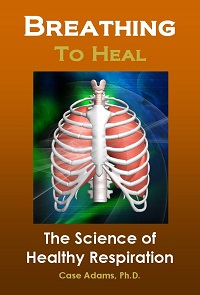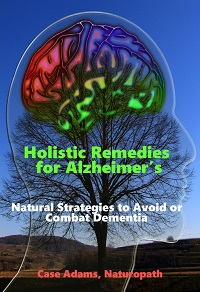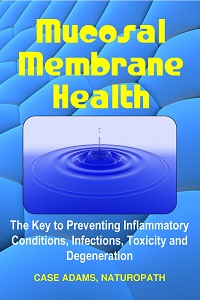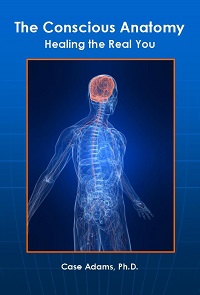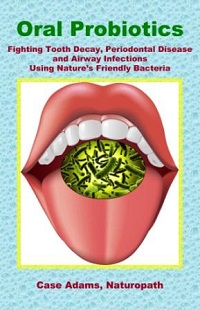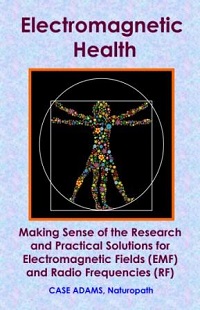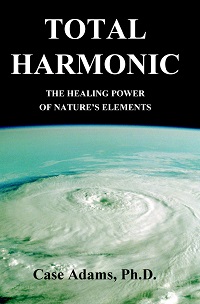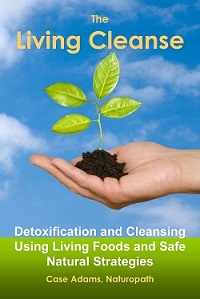9/11 First Responders Still Fighting For Their Lives
Ground Zero research illustrates both a misunderstanding of the effects of abrupt versus long term toxin exposure as well as a lack of understanding about cancer. For this reason, many first responders are still suffering from cancer and lung diseases.
In this article
Mass media reported no risk
The mass media has generally communicated there is no risk of cancer for those exposed to the World Trade Center 9/11 terror attack. This illustrates a lack of understanding not only of the study, but of the rest of the research surrounding the event.
The preliminary data, released the New York City Health Commissioner’s office and researchers from the New York Health Department, Columbia University and the University of Illinois, might appear from its cursory overview that those exposed to the Ground Zero dust after the attack have no more cancer risk than those who were not exposed to the dust.
The research, published in 2012 in the Journal of the American Medical Association, analyzed the diagnosis rates of cancer among 21,850 first responders and rescue workers. It also followed 33,928 rescue/recovery operation personnel. The analysis used 11 state cancer registries to establish baseline risk of the cancers.
Contrary to the media headlines, the analysis found that those involved in the Ground Zero rescue and recovery operations have suffered significantly higher incidence of prostate cancer, thyroid cancer, and myeloma. However, the data could not relate the risk to exposure levels.
Preliminary data, but developing risk
The researchers clearly stated that the data was preliminary and could not clarify the issue because cancer takes many years to develop. According to Dr. Thomas Farley, New York City’s health commissioner, the data “won’t settle the question because it’s still too early.” Dr. Farley explained to the Associated Press that, “People are very, very interested in this topic and we thought it was important to get the data out that we have even though it is early.”
Other researchs confirmed cancer link
Other data comes from 2007-2008 cancer registries. This means that only those who were diagnosed with cancer before 2008 showed up in the data. That is only 5-6 years after the Trade Center bombings.
Malignancies typically take years, even decades to become diagnosable. Everyone is carrying malignant cells in our body, as our immune system is set up to destroy malignant cells. Those whose immune systems are weak or otherwise incapacitated due to an overload of toxins, stress or other immune suppression will allow those malignant cells to expand slowly into tumors.
It is only when those tumors have greatly expanded can doctors diagnose them. This expansion largely depends upon the type of malignancy, but typically can take many years to develop.
Toxins and delayed risk
For toxic exposures that take place over a short period of time, most people’s immune systems will respond appropriately and remove much of the toxins form the body’s tissues. Those with a longer duration of exposure or had weaker immune systems will experience problems with this toxin removal, as the toxin overload may be greater than the immune system can process. Of these, inflammation and potentially, tumors may develop as a result of an unsuccessful inflammatory process (as the body conducts inflammation to heal itself).
The data from the study is consistent with this scenario. WTC first responders had 14% higher rates of all cancers compared to standard incidence ratios. First responders also had twice the incidence of thyroid cancer, 43% higher rates of prostate cancer, and nearly three times the incidence of thyroid cancer compared to normal incidence of these cancers.
Furthermore, those who were in the WTC registry for exposure but were not first responders did not have a significant increase in any of the cancers. These were primarily individuals who had varying degrees of exposure because they lived or worked in the area of the bombings. Thus their exposures were typically limited to the day of the bombing, and in some cases – for those who remained in the area – a few days following the bombing.
This compares greatly to those who worked as rescue or recovery workers, whose exposures often occurred for more than 90 days following the bombings.
A one, or even a few days of exposure should not, in most people, result in immediate malignancies, because short toxin exposures are typically within the tolerance of the immune system. As a comparison, many will gather around a campfire that releases many potentially carcinogenic toxins from the wood and paper being burnt. This toxin exposure may stimulate the immune system to remove those toxins, but will unlikely create malignancies. In comparison, those who work in incineration occupations will have significantly greater rates of malignancies and cancer.
However, should a person have other immunosuppression and/or a build up of other toxins within the body, then their immune system will likely not be able to remove any cell malignancies related to the exposure. They will have an increased risk of cancer, and the exposure helped increase that risk.
Yet this increased risk will not significantly increase the short-term incidence of cancer because their exposure levels were not long-term. In these cases, their cancer rates would correspond to their accumulated toxin exposures along with their relative immunity over those years. Thus we might find in 15-20 years that those who were exposed to the ground zero cloud might have elevated risks of cancer due to their short-term exposures, but that increased level would likely be masked by the more long-term exposures each person would have had since.
Ground Zero toxins
These long-term exposures include air pollutants, formaldehydes, toxins in foods and so forth. And their ability to remove those toxins would overlay that long-term exposure.
Other data has confirmed that the longer exposures produced many other significant health risks. These include sarcoidosis – an inflammatory lung condition that can develop into malignancies. A study released last year from the New York City Health Department found that first responders suffered sarcoidosis nine times the normal incidence.
This study also found that those with short-term exposure to the dust cloud of the bombings had no increased risk of sarcoidosis.
This and other data relating to cancer and toxin exposure significantly relates to not only long-term exposure levels, but to the strength of our immune systems. Strengthening the immune system requires a focus upon a number of key health factors.
58 types of cancer identified
CNN reported in 2012 that Federal health authorities just added 58 cancer types to the insurance coverage for first responders, nearby residents and survivors of the 9/11 terrorist attacks in New York City. The World Trade Center Health Program, led by Dr. John Howard, is responding to recommendations made by its Science/Technical Advisory Committee to add the cancers.
While health insurance coverage for these victims is certainly laudable and responsible, we must also consider a larger issue: Our buildings are being made with toxins that, when they are demolished, will poison us for many years to come. When it comes to building demolition, these toxins come in the form of course particulates.
Building Toxins and Course Particulates
When our modern buildings are demolished, they can rain fumes of various dangerous substances a mile or more from the demolition site.
The most blatant illustration of the demolition effect is the World Trade Center bombing. The collapse of the towers caused such a toxic fume that there are still thousands of people suffering from a slow poisoning of the lungs. Dangerous chemicals including asbestos, formaldehydes, benzenes, arsenic and many others were breathed by thousands of people.
This effect was not limited to rescuers and those who escaped from the twin towers. Many others who happened to be in the vicinity are now suffering. One of the more prevalent diseases has been sarcoidosis—a life-threatening inflammation of the lungs. As toxin deposits build up and damage the airways, scar tissue forms—making mild asthma seem like a walk in the park.
This scar tissue affects the elasticity and efficiency of the lungs, causing life-threatening lung collapse. A study released by nine doctors (Izbicki et al. 2007) who researched the delayed health effects at Ground Zero reported that firefighters and rescue workers were diagnosed with sarcoidosis at a rate of five times the incidence rate prior to 9/11.
An epidemic of emphysema, asthma, allergies, sarcoma and the many cancers was also an unfortunate result of the Trade Center bombing. While we know asbestos is toxic to the lungs, it is still a popular building material. Many structural components of new buildings use asbestos as an ingredient. Because it is a cheap fire retardant material, buildings still go up using it. Asbestos has been linked to thyroid cancer and lung cancer in many studies, which caused a number of high profile lawsuits and residential building restrictions.
Another pollutant released when buildings collapse or are demolished is benzene. Benzene has been identified as a carcinogen, and certain types of leukemia are associated with benzene exposure. Other toxins thought to be released by building collapse include mercury, lead, cadmium, dioxin, polycyclic aromatic hydrocarbons (PAHs) and polychlorinated biphenyls (PCBs). Many of these components are still used to build buildings. All of them were used in buildings a few decades ago, when many of our current skyscrapers were built.
Disorders outside of cancer
Besides the more publicized cases of cancer and sarcoidosis, ailments associated with the WTC bombing include reactive-airways syndrome, asthma, chronic throat irritation, gastroesophageal reflux disease (GERD—also referred to as heartburn) and persistent sinusitis. Other cases thought to be associated with the WTC have included miner’s lung and thyroid cancer. While many thought these disorders were temporary, new diagnoses have continually increased. This is because toxins can build up and reside in lung tissue cells, affecting future lung capacity for many years to come. Studies on firefighters involved in the rescue report an average loss of 300 milliliters of lung capacity (Senior 2003).
It is thus safe to say that exposure to these sorts of particulates may not be symptomatic for years after the exposure. This was certainly the case with those exposed to Agent Orange in Vietnam. Cases of prostate cancer, skin cancer, and chronic lymphocytic leukemia did not appear in some veterans for decades later (Beaulieu and Fessele 2003).
Particulate pollution or soot is the most dangerous form of outdoor pollution. Auto exhaust, aerosols, and chemicals from power plants and wood burning are the most common sources. While the particles themselves are too small to be seen by the naked eye, they can be seen as a whole in the form of a haze in the sunlight. While the body’s cilia hair and mucous membranes in the nose and throat might filter and catch some of these particles, many will make it into the lungs where they can trigger lung conditions.
Like any living organism, the earth and its atmosphere have the means to cleanse particulates out of the system. The atmosphere conducts a number of self-cleaning currents, which move and break down pollutants. One such mechanism is the hydroxyl radical (OH) molecule. The immediate effect of the hydroxyl radical is to form photo-oxidants like nitric acid, which undergoes a photolysis reaction with nitrous acids. These can be toxic to the lungs in great volumes, but if the particulates are chemical toxins, the body suffers from poisoning and a complete breakdown of the immune system.
Questions Not Being Asked
This forces us to ask questions that are not being asked: Are we really expecting that all the other buildings in New York and other cities in the U.S. are going to last forever? Buildings are not mountains. At some point, every building will be demolished, either to build one in its place or through disaster. The demolition of a building built with carcinogenic toxins is a recipe for a national health crisis, not to mention a ticking time bomb possibly behind sick building syndrome.
The second question is why, after we now know what these toxins produce in the form of fatal diseases and cancers, are we still using them to build our buildings – to poison future generations?
The only reasonable solution is to require builders to utilize non-toxic elements to build buildings. The gigantic pyramids of Egypt were built some 3,000 years ago and they are still standing, and yet they utilized only natural elements as building materials.
REFERENCES:
Jiehui Li, MBBS, MSc; James E. Cone, MD, MPH; Amy R. Kahn, MS; Robert M. Brackbill, PhD, MPH; Mark R. Farfel, ScD; Carolyn M. Greene, MD; James L. Hadler, D, MPH; Leslie T. Stayner, PhD; Steven D. Stellman, PhD, MPH. Association Between World Trade Center Exposure and Excess Cancer Risk. JAMA. 2012;308(23):2479-2488.
Jordan HT, Stellman SD, Prezant D, Teirstein A, Osahan SS, Cone JE. Sarcoidosis diagnosed after September 11, 2001, among adults exposed to the World Trade Center disaster. J Occup Environ Med. 2011 Sep;53(9):966-74.


